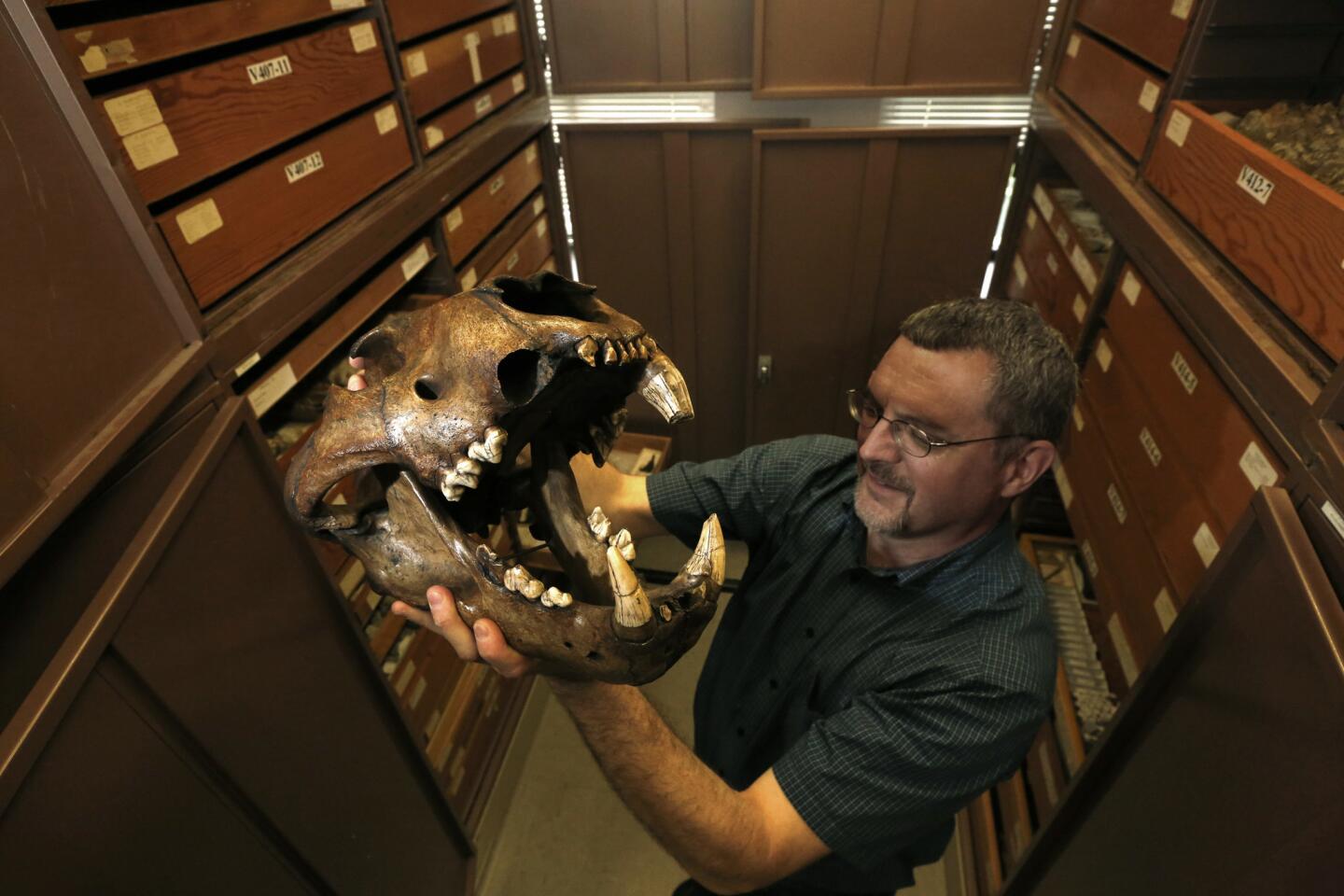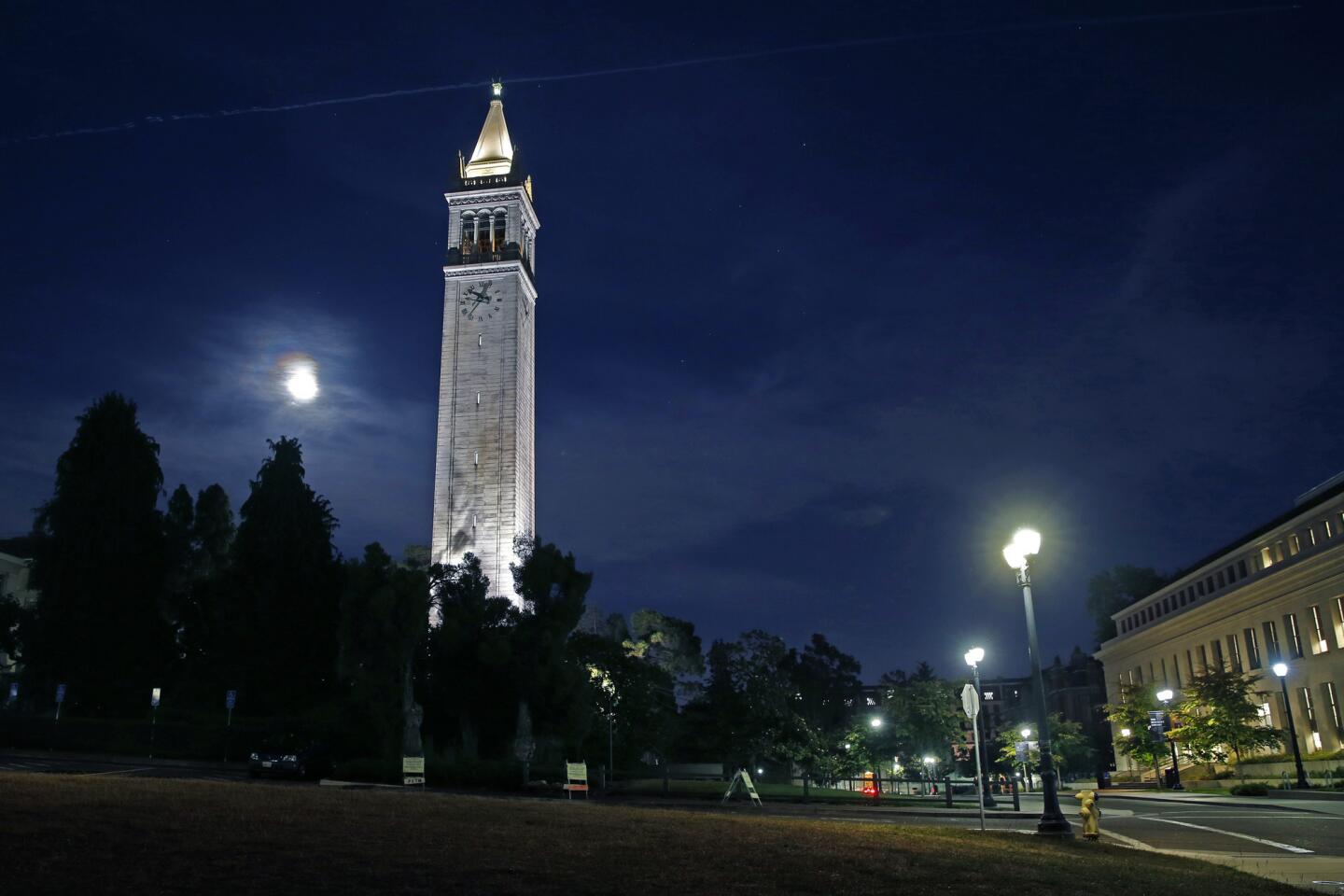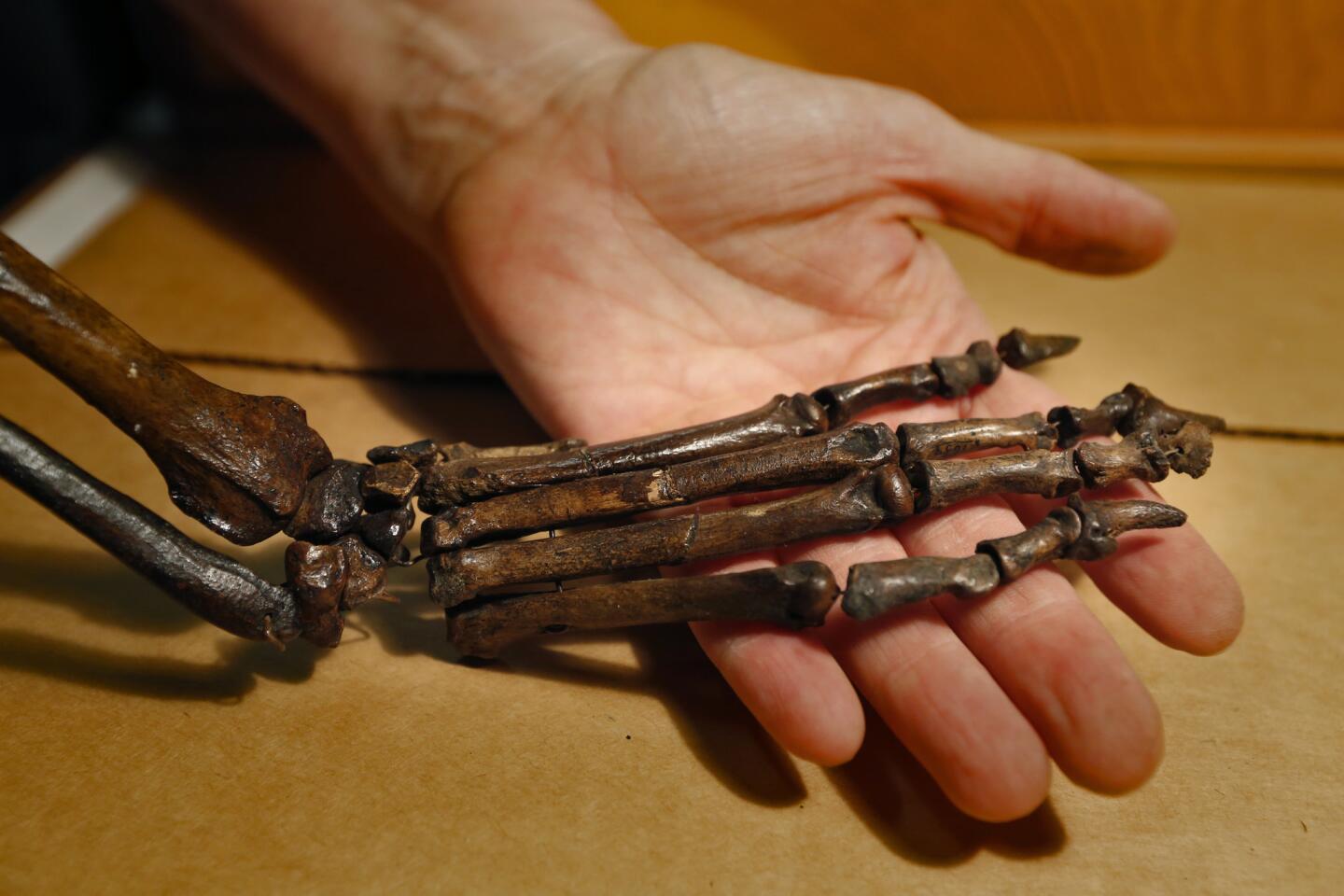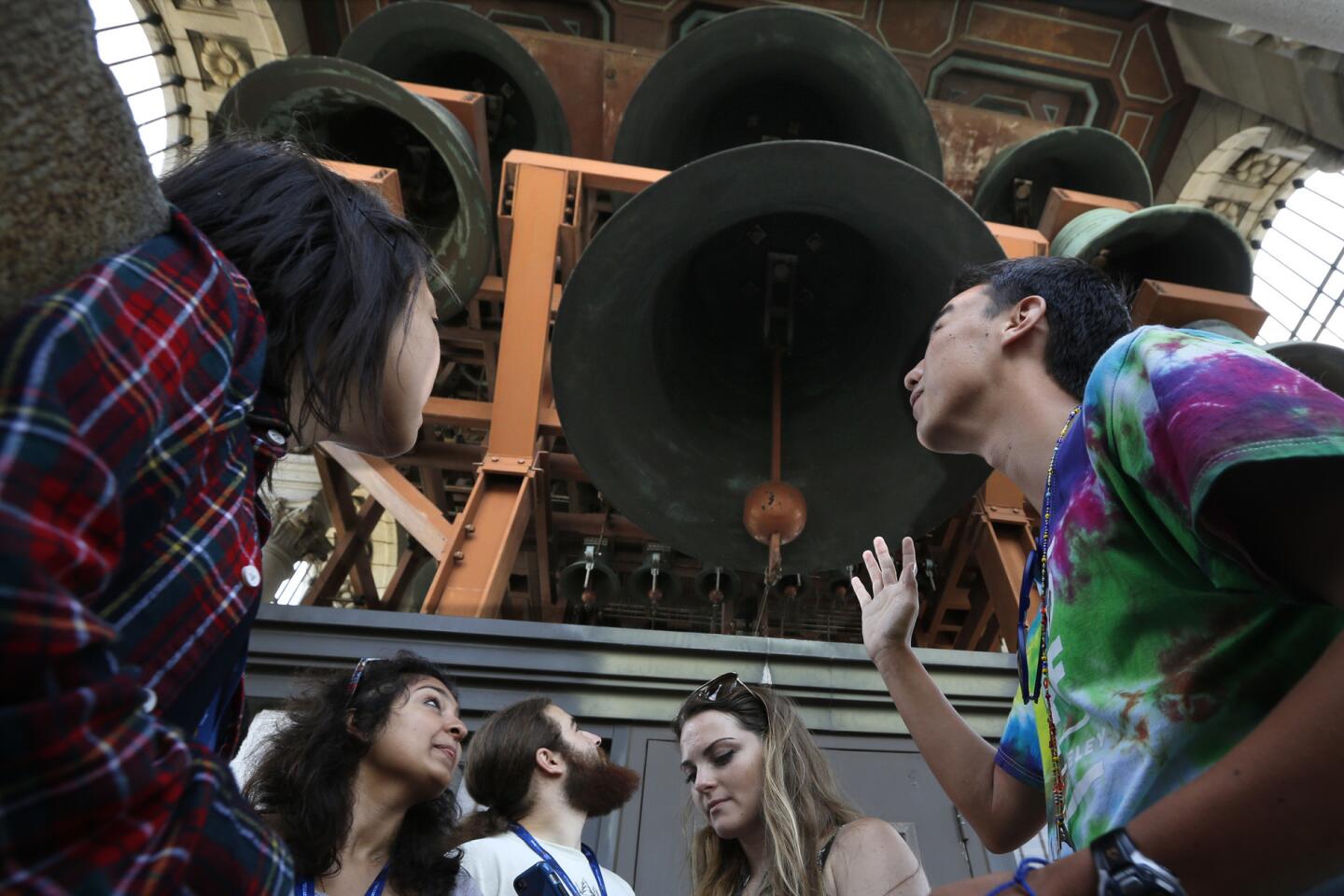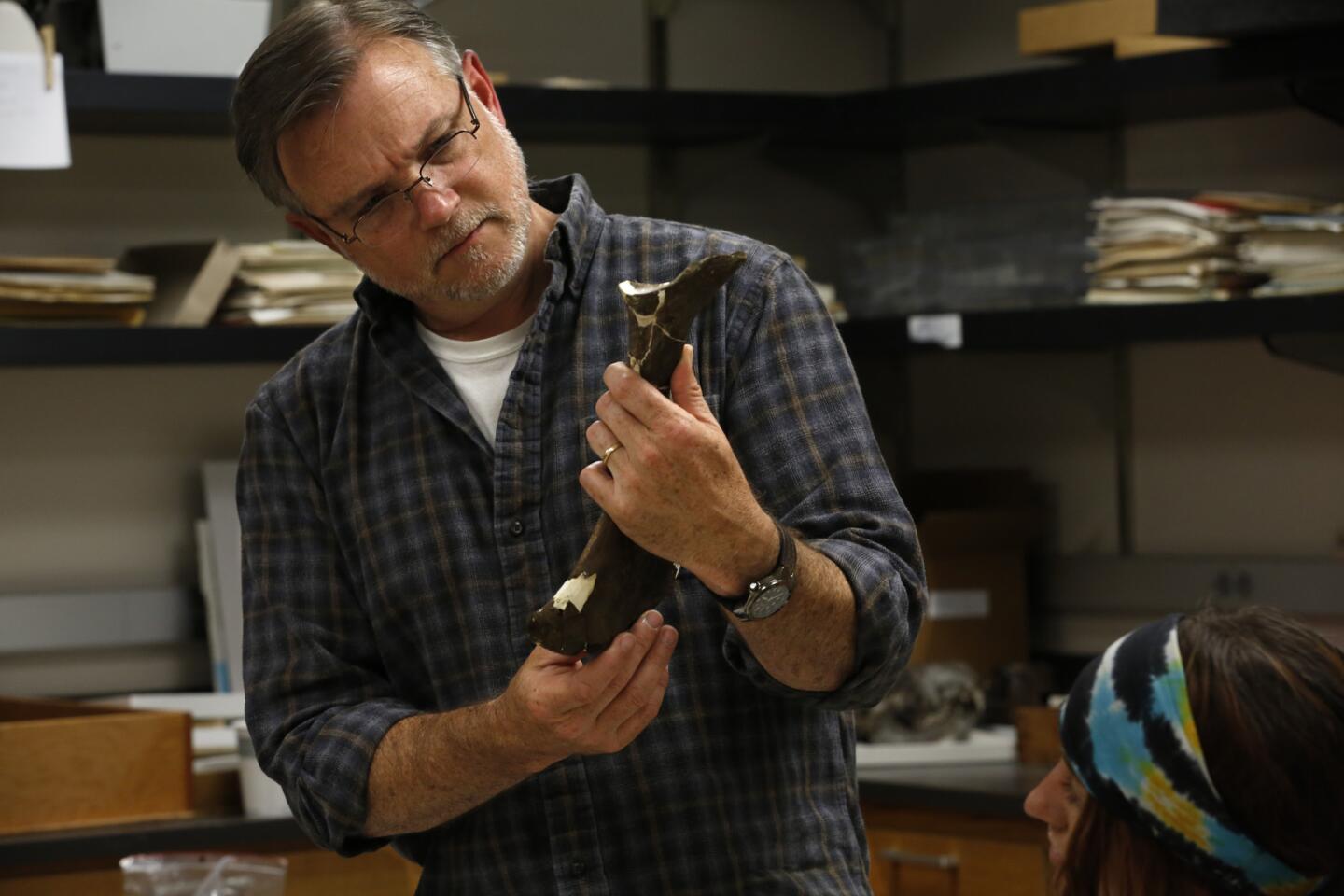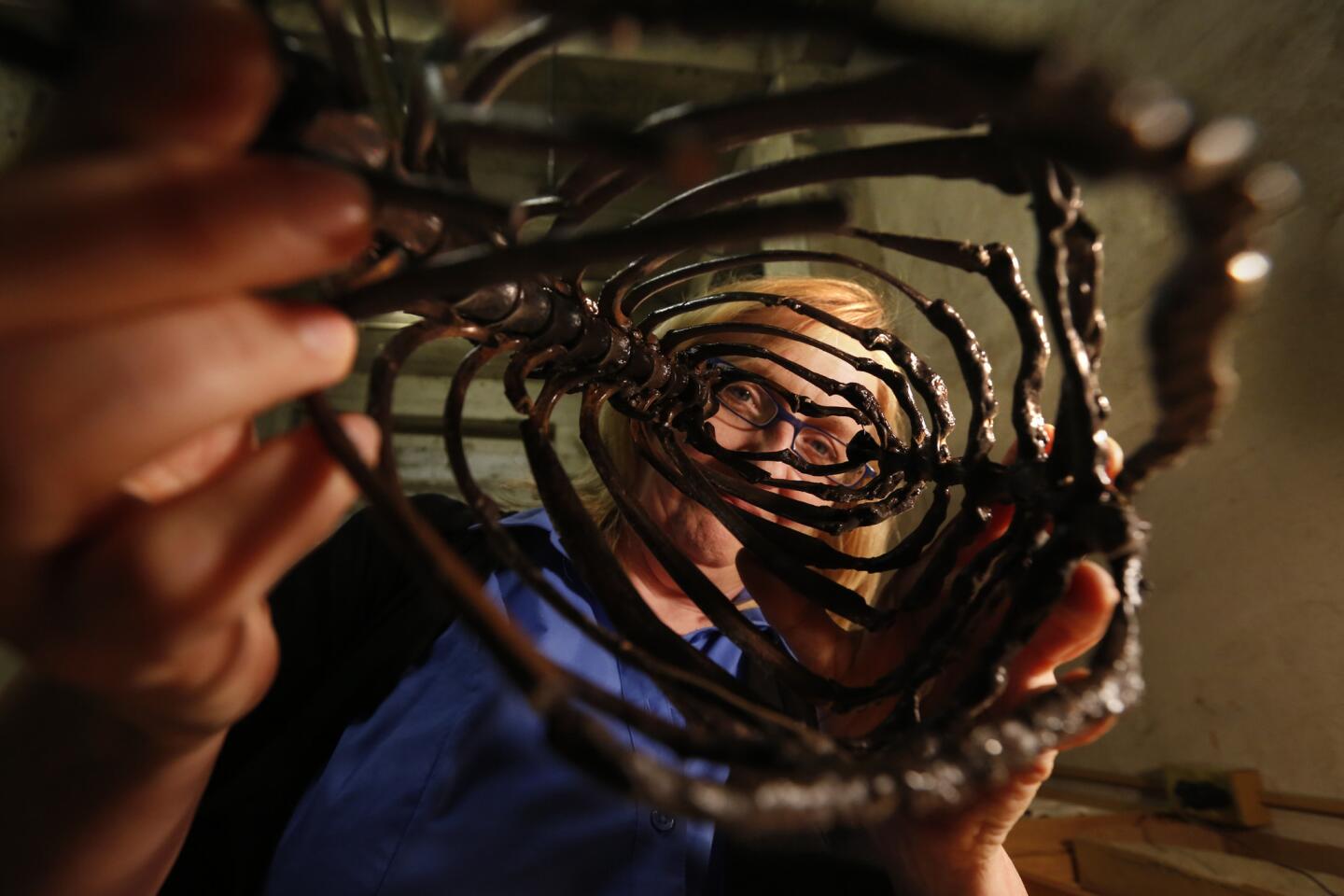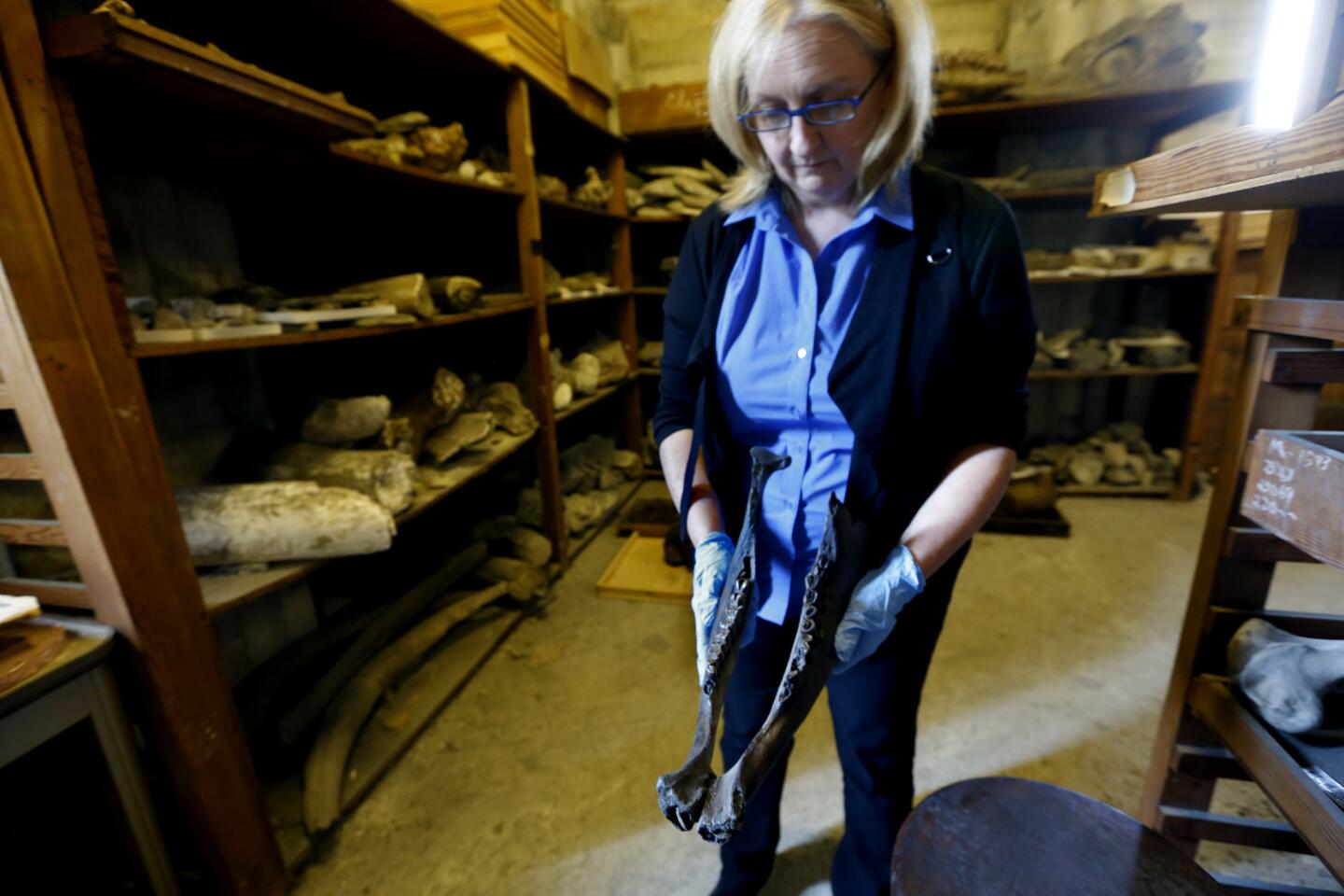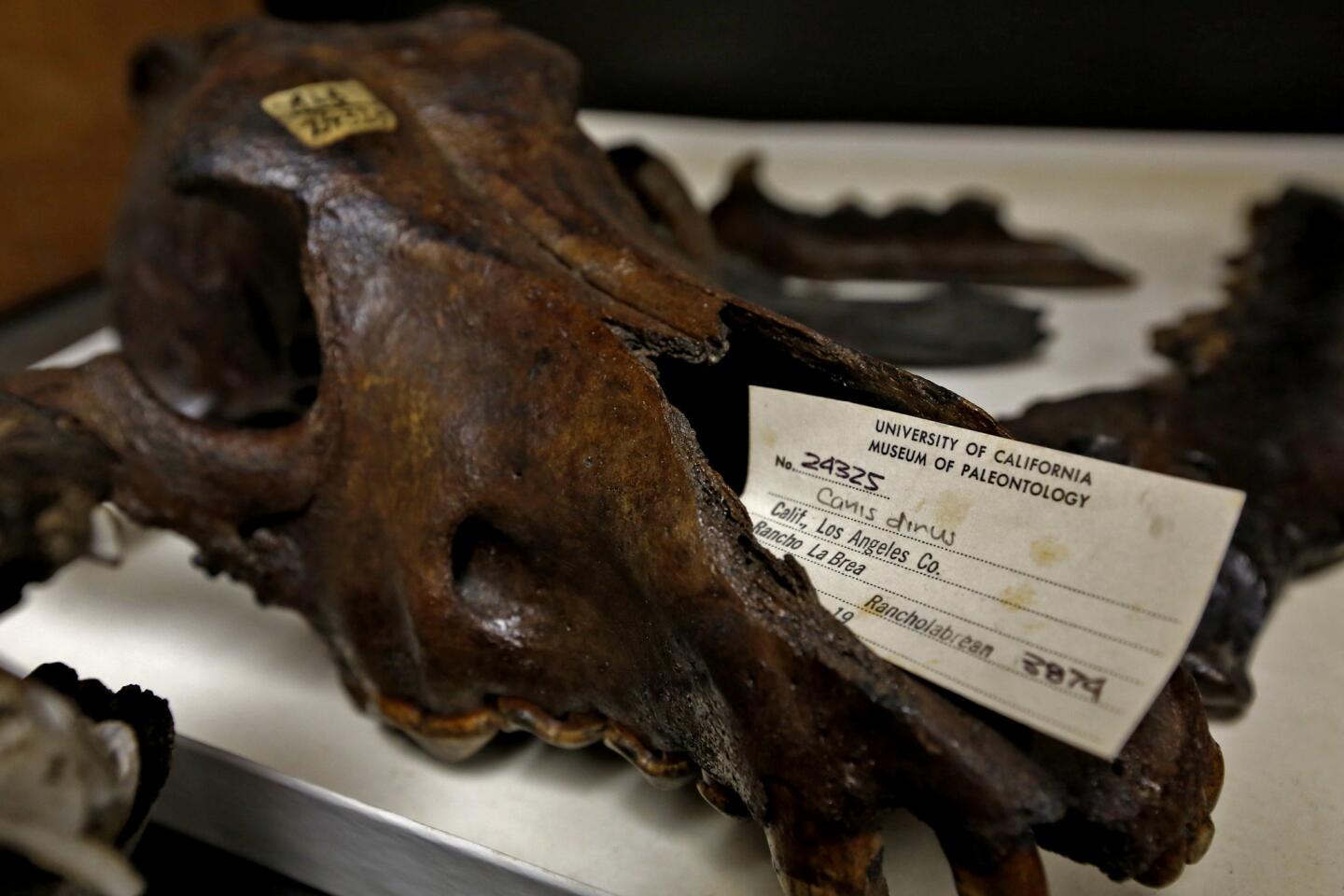Great Read: Within UC Berkeley’s famous tower, a scarcely known trove of fossils
- Share via
Reporting from BERKELEY — Deep in the heart of a bell tower, Eric Holt leans over and pulls open a wooden drawer filled with bones. The walls of this dimly lit room and those below are lined with shelves upon shelves of fossils — mammoth tusks, bison jaws, giant sloth limbs.
Some drawers are neatly organized, tiny specimens nestled in clearly labeled paper trays. Others are a jumble of bones, gray and fuzzy to the touch.
“This is a layer of about 80 years’ worth of dust,” Holt says.
But then Holt, a UC Berkeley graduate student, picks up one small fuzzy fossil and flips it over. The bottom, shielded from dust in the air, has a clean, smooth caramel-colored surface, with a burnished-bronze glow. This is what many of the bones looked like nearly a century ago, when they were first pulled from the tar and cleaned.
Standing about 307 feet tall, the iconic Sather Tower — better known as the Campanile — defines UC Berkeley’s skyline. Cal students crossing campus regularly hear it ring on the hour, with a live concert featuring the 61-bell carillon at noon. They may even take in the view of the Golden Gate Bridge from the observation deck, some 200 feet up. But very few have seen the trove of fossils that lies within — or know how on Earth they ended up there.
The Campanile, celebrating its 100th anniversary this year, is thought to house about 300,000 fossils on five floors. The collection boasts petrified wood from Yellowstone National Park and bones from short-faced cave bears, giant sloths and saber-toothed cats from the McKittrick Tar Pits near Bakersfield. But their largest collection comes from the La Brea Tar Pits in Los Angeles.
“This is just this amazing time capsule,” says UC Berkeley senior museum scientist Patricia Holroyd, carefully looking through the drawers with blue-gloved hands. Scraps of newspaper from the early 1900s, with the bones’ origins written on them in pencil, have been placed in clear plastic bags.
Afternoon offers the best viewing, when the sunlight can filter through two narrow windows, one on each wall. The sonorant bells, a few levels above, don’t bother the researchers at all.
“You can lose track of time in here,” Holt says.
Once, Holroyd glanced over at Holt’s watch — only to realize that they’d gotten locked in.
“We had to call campus security to come let us out,” Holt said.
::
Bones from the La Brea and McKittrick deposits date back tens of thousands of years to the late Pleistocene era, when ice-age animals that roamed parts of California were vastly different than they are today. Giant ground sloths, Yesterday’s Camels, American lions and dire wolves shared space with more familiar creatures, including bison, coyotes and deer.
The Campanile’s collection pales in comparison to the La Brea Tar Pits and Museum, which houses about 5 million specimens — and to which researchers are still adding, digging more bones out from the natural asphalt that bubbles up around the site. Seen as distant and superfluous compared with the Hancock Park museum, and yet too numerous to house with the well-curated specimens in the University of California Museum of Paleontology elsewhere on the Berkeley campus, the bell tower’s contents were largely forgotten for decades.
But in recent years, researchers have begun to find new potential in these fossils, which could shed fresh light on key periods in California’s evolutionary and environmental history.
The end of the late Pleistocene was a period of environmental upheaval. Humans had moved into North America, and the climate was warming and drying. Scientists are trying to understand whether the disappearance of many of these animals was due to climate change, human encroachment or a combination of the two.
Today, as the climate warms and the number of extinctions continues to rise, scientists believe the lessons from the past may well illuminate the problems of the present.
Holt, for one, studies the jaws and skulls of gray wolves, dire wolves and coyotes, because the changes in their shapes could reveal the dynamics among these competing predators over time. Looking for these patterns requires a lot of bones — and there are plenty among the Campanile’s estimated 20 tons of fossils.
“When I first got here, very little research was being done on anything up here,” Holroyd says. Now, “we’re finding a lot of different and fun things that we can do with the fossils that are very different than what the original scientists clearly imagined.”
::
Less than a quarter of a mile away in the paleontology museum, Robert Dundas opens a metal cabinet in the vast climate-controlled building and pulls out a skull of an American lion. This larger relative of the African lion once prowled the Los Angeles Basin, probably hunting deer, camels and other herbivores.
“These things aren’t light — especially if they’re still filled with tar,” he said, gripping the golden-brown skull with both hands.
Dundas, a paleontologist and interim associate dean at Cal State Fresno, began digging into the Campanile’s hidden treasures as a UC Berkeley graduate student. He cataloged many of the fossils, helping to bring some order to the neglected collection.
As his fascination with the fossils grew, he began researching how and why the Los Angeles fossils ended up in Berkeley’s bell tower.
One of the first scientists to lead major excavations at the La Brea Tar Pits was John C. Merriam, an ambitious paleontologist who sought to make Berkeley’s nascent program the best in the western United States.
“Merriam had a pretty big ego. He felt that he was really the most prominent vertebrate paleontologist on the West Coast, and he probably was at the time,” Dundas says.
Merriam sought to establish some control over the tar pits excavation site, but ultimately failed. G. Allan Hancock, who owned the property that held the tar pits, ultimately gave the land to the County of Los Angeles.
Still, until Merriam and his team were shut out in 1913, they dug up thousands upon thousands of bones from the tar pits. He also expanded the young collection by trading “duplicate” specimens from the tar pits for others from around the globe.
Soon, the paleontologists had a problem: There were so many bones — and they reeked of asphalt.
The solution? Put them in the Campanile, which was still being built. And there they stayed.
::
Down the hall, Holt sits in a lab in front of an array of fossils that Holroyd has gently washed in warm water. He and other students will examine them, catalog them and then put them on a tray to be photographed.
The fossils have had it rough. Some are broken, and it’s not clear whether they were damaged while or after they were dug out of the ground. Holt and other students look through the bones, finding the jagged edges, grabbing bottles of a special glue to reunite the matching fragments.
In some ways, it’s almost like an excavation of an excavation, they say.
John Harris, chief curator emeritus at the La Brea Tar Pits Museum, said he’s not surprised the Campanile fossils were neglected for so long.
He encountered the same attitude when he first took over the earth sciences department at the Natural History Museum of Los Angeles County, which oversees the tar pits museum.
“When I came to Los Angeles some 35 years ago, I was told there was no point in working on tar pits fossils, we know all about those,” Harris says. “Of course that’s wrong.... There are new questions to ask.”
Julie Meachen, a paleontologist at Des Moines University, is one of the researchers asking those questions. Thanks to the Campanile fossils, she’s been able to study dozens of saber-toothed cat jaws, looking for patterns in their evolution. She has found that their physical traits appear to have fluctuated whenever the climate changed.
Because many of the Campanile’s bones were excavated from a particular tar pit, they may help fill in a gap in the La Brea fossils’ timeline from about 23,000 to 27,000 years ago, she said.
“That specific period in time is unique because it doesn’t exist at the L.A. tar pits anymore,” Meachen said.
Saving the Campanile’s fossils will take time and money, and there’s currently no funding for the La Brea bones. But the researchers have received a grant to properly curate fossils in the tower that come from the McKittrick and Maricopa tar seeps — which they do, bone by bone.
The fossils badly need the attention. Some of them, stored in cabinets that trap moisture, have been attacked by mold.
“It was sad to see — and a little disturbing,” said Holt, who once inhaled a lungful of spores after opening a hard-hit cabinet.
After the stricken bones are washed, they must be bathed in ultraviolet radiation to kill off the remaining spores. So the students wait for a sunny day, carefully lay the fossils on a cart and, at long last, bring them into the light.
Twitter: @aminawrite
